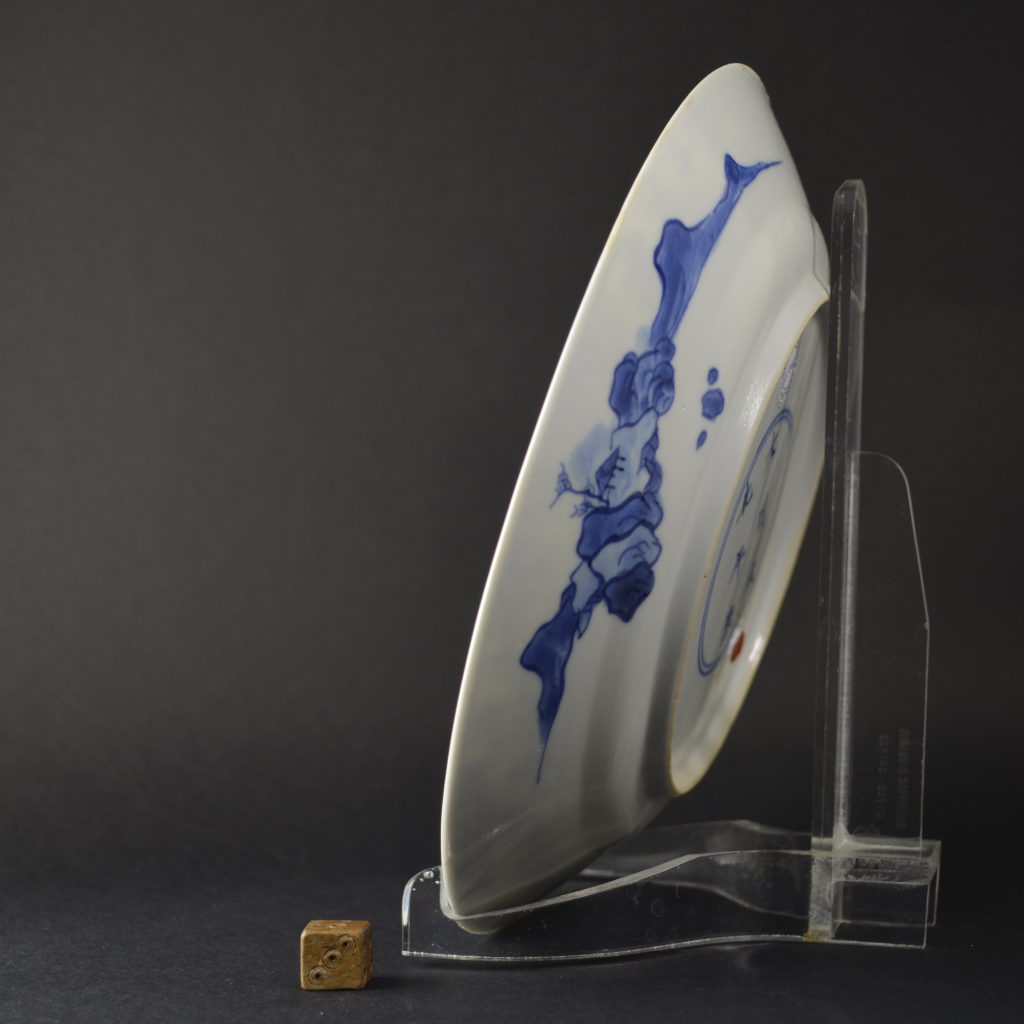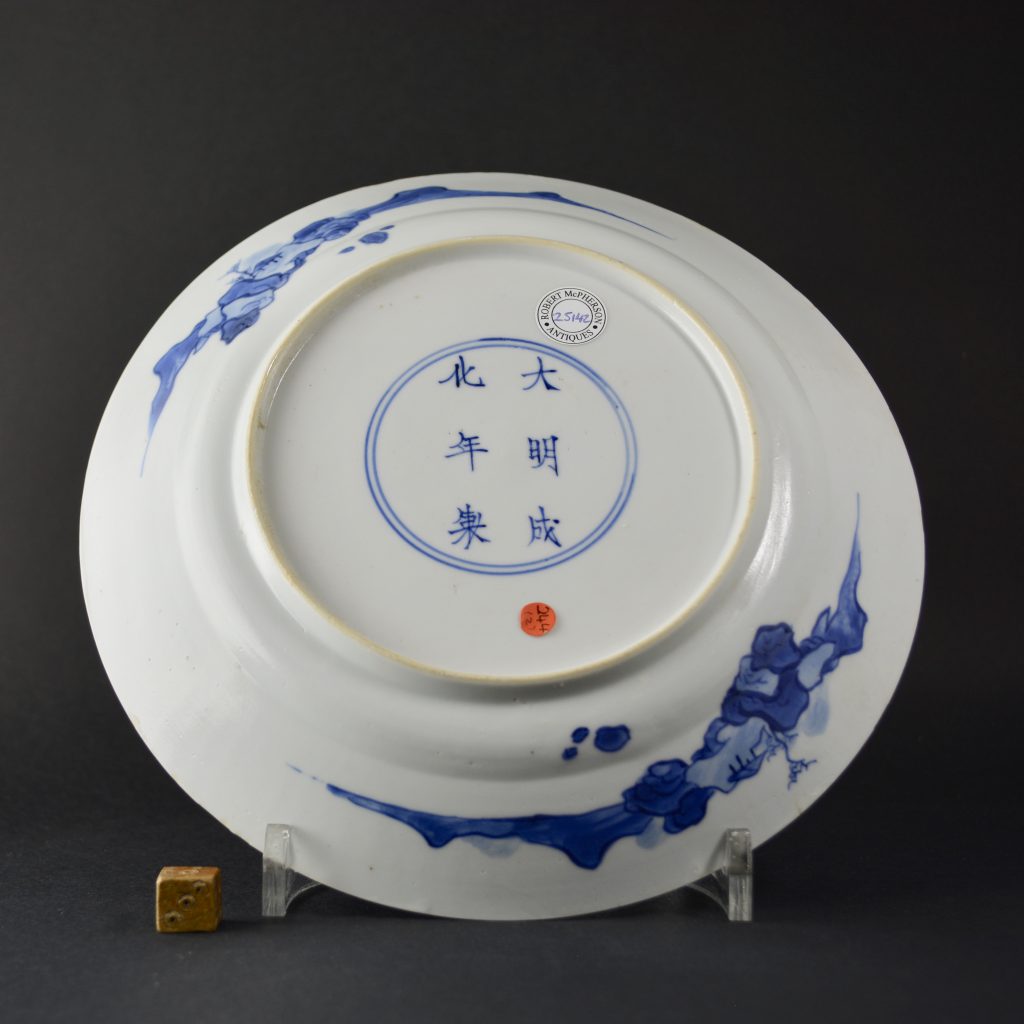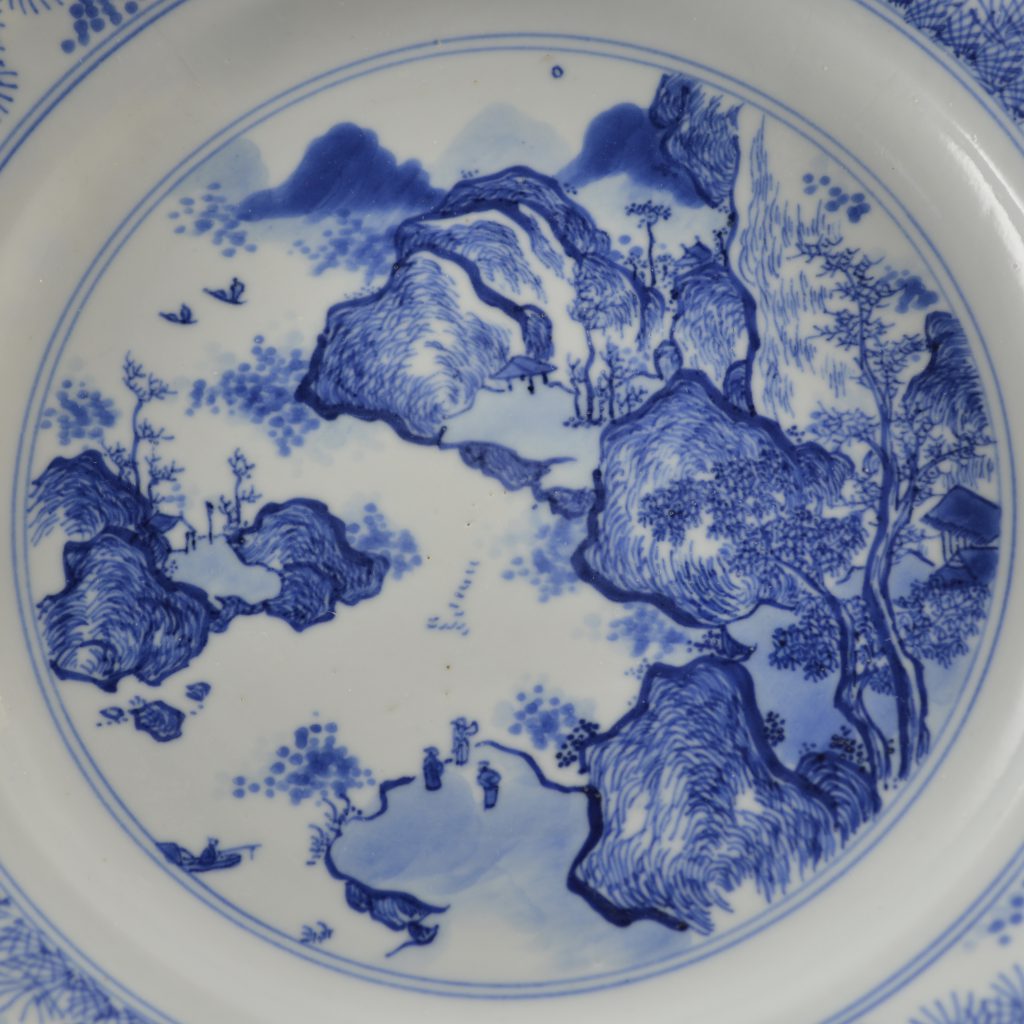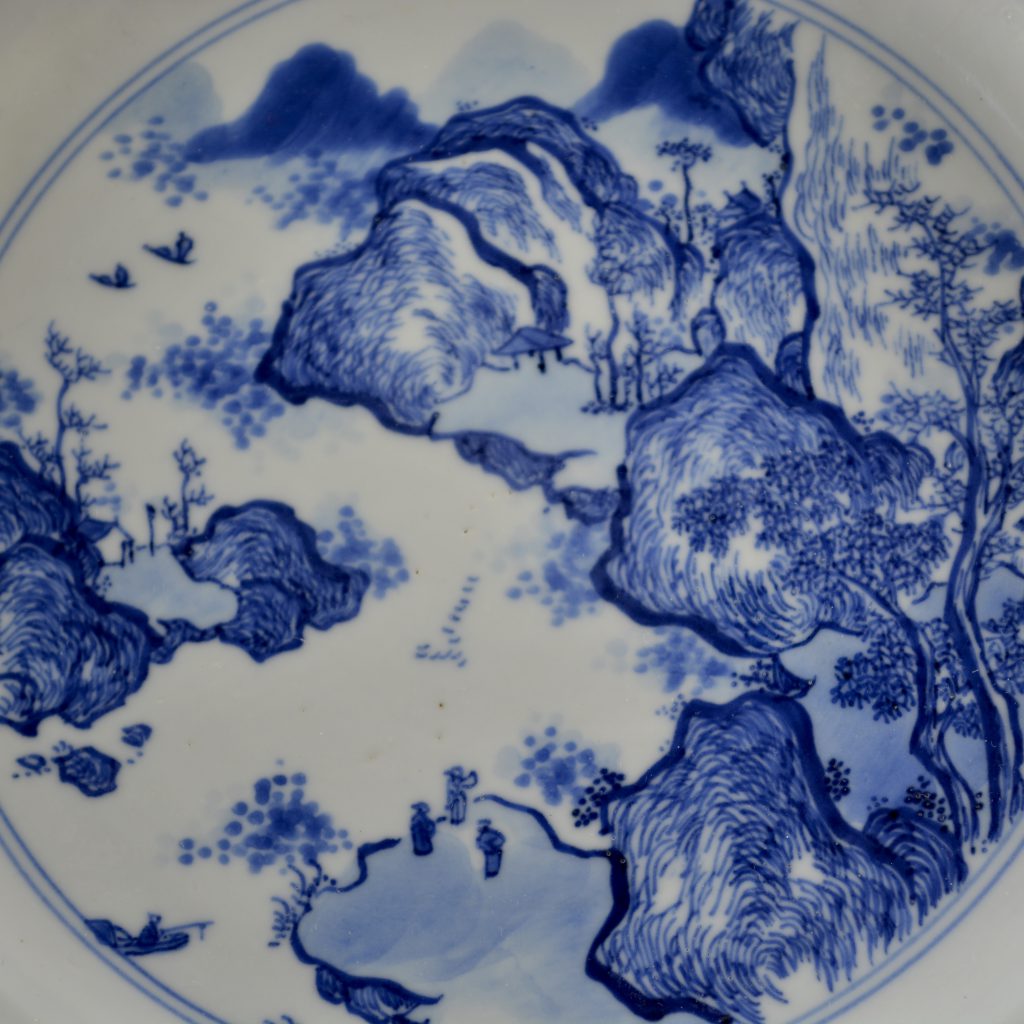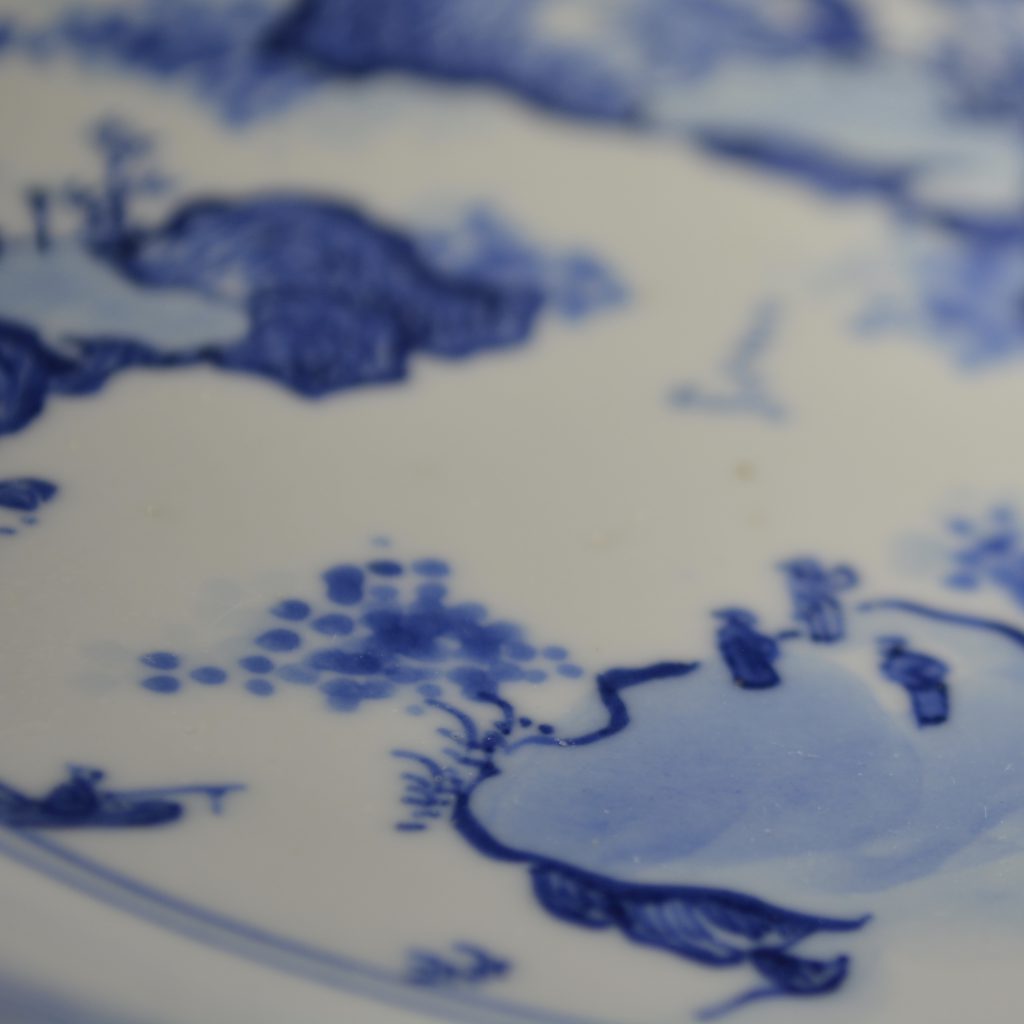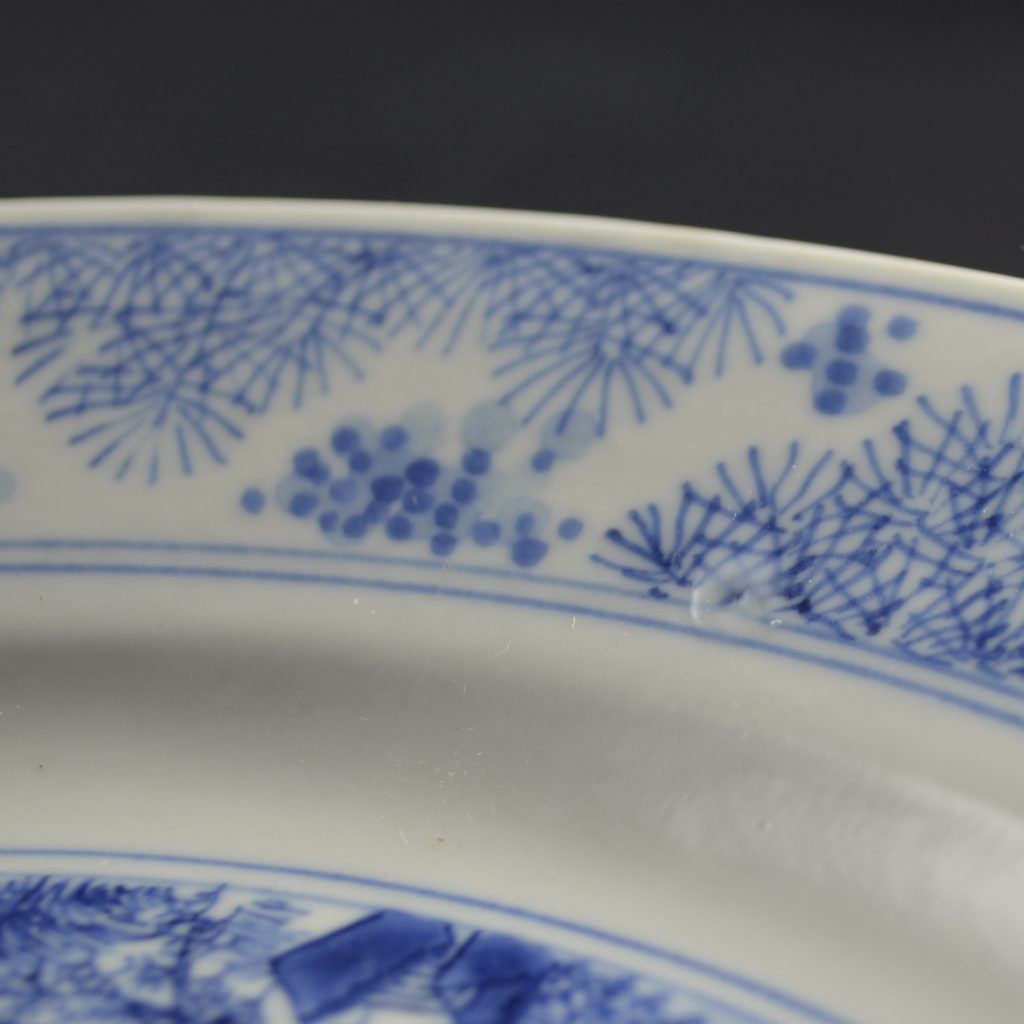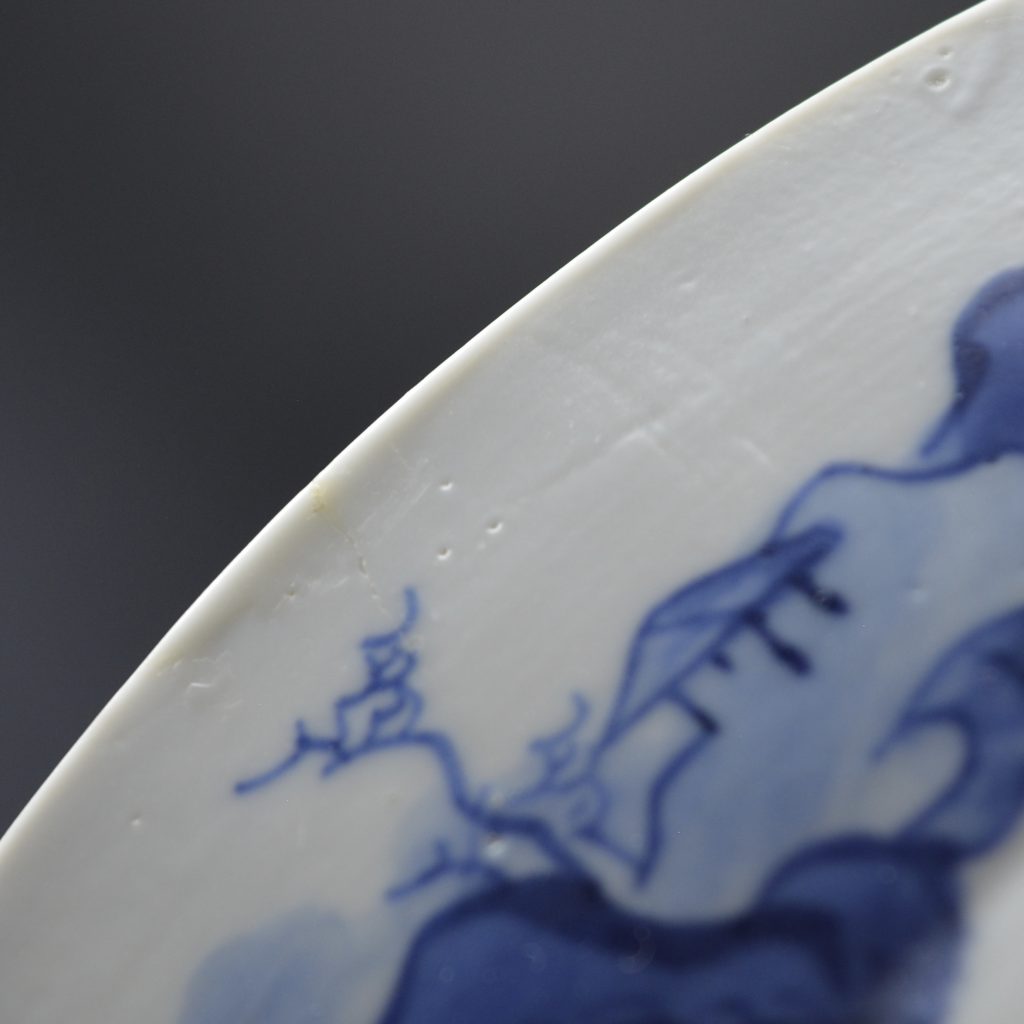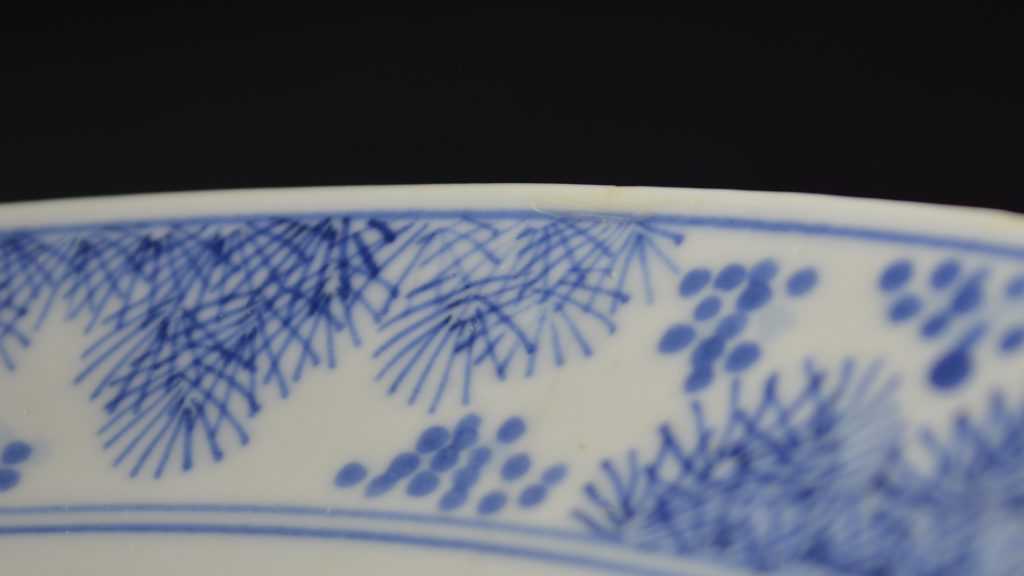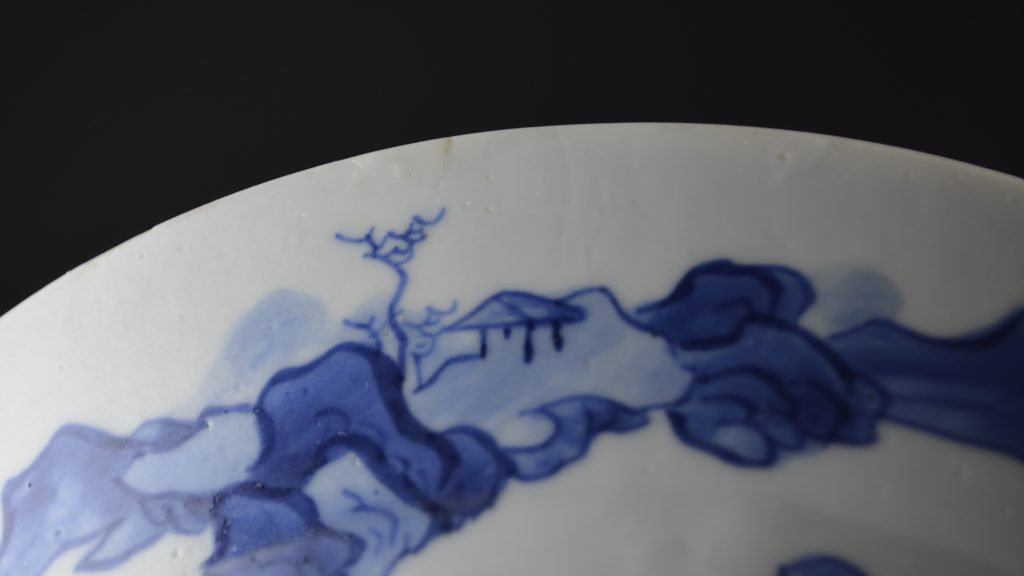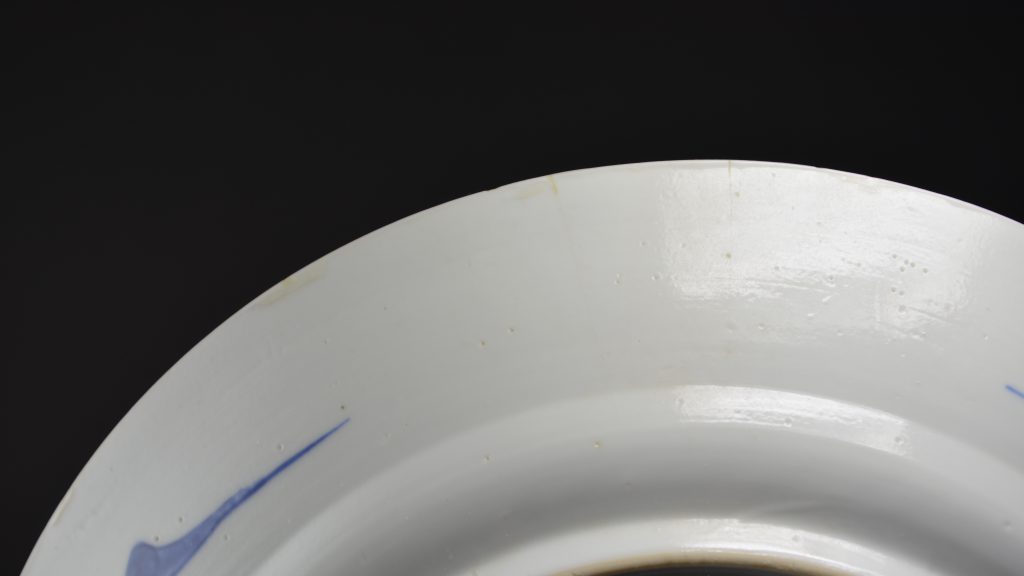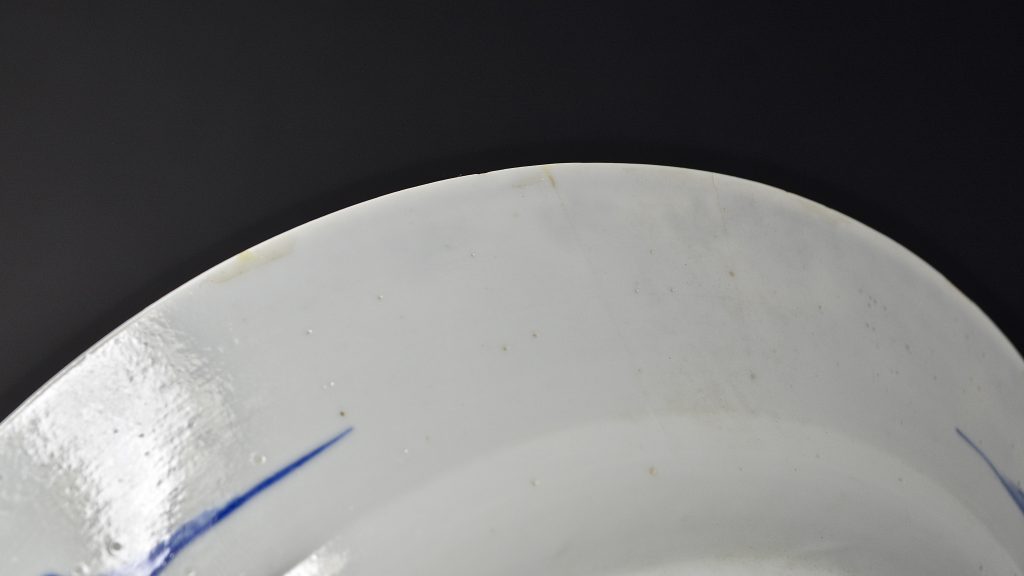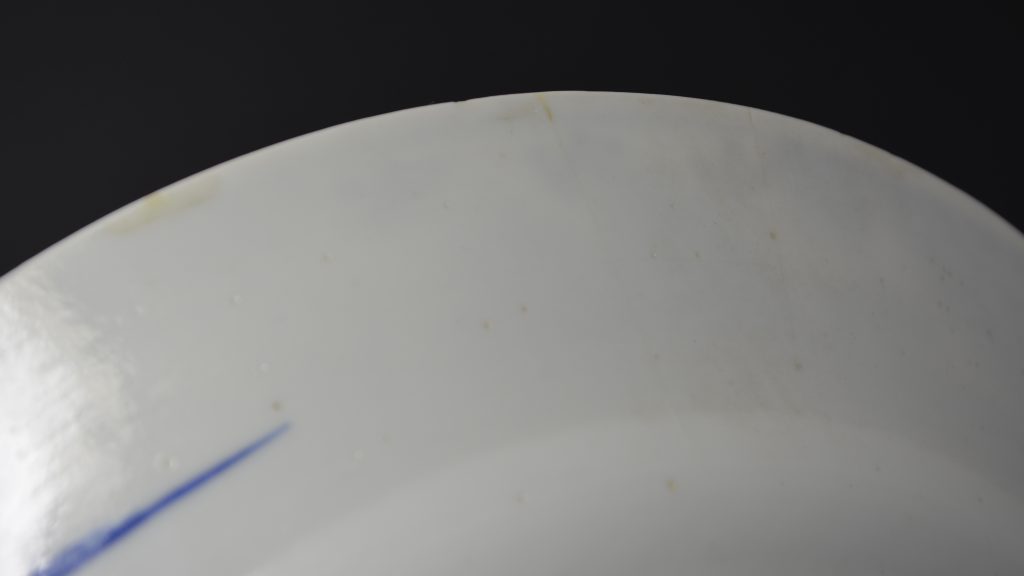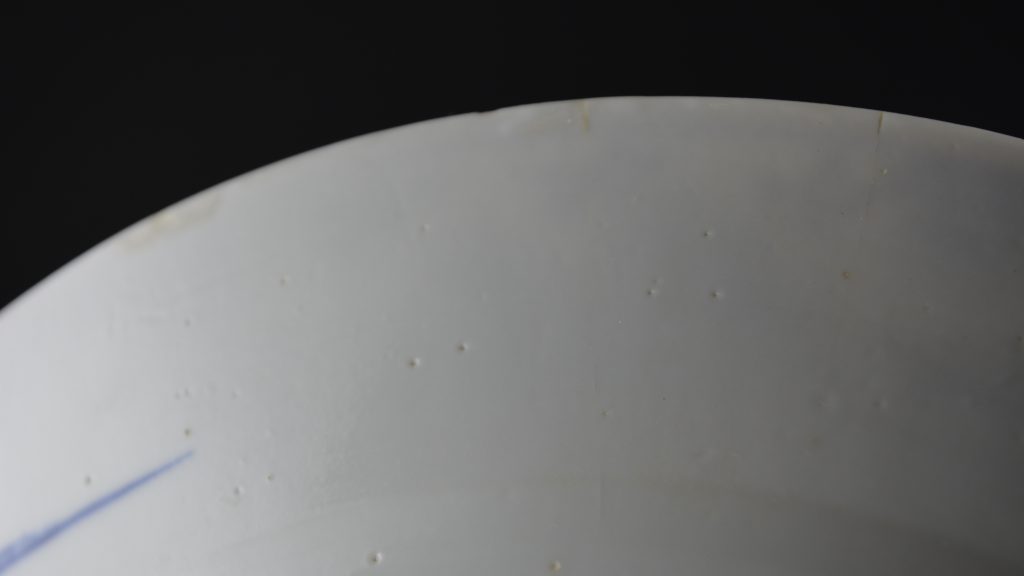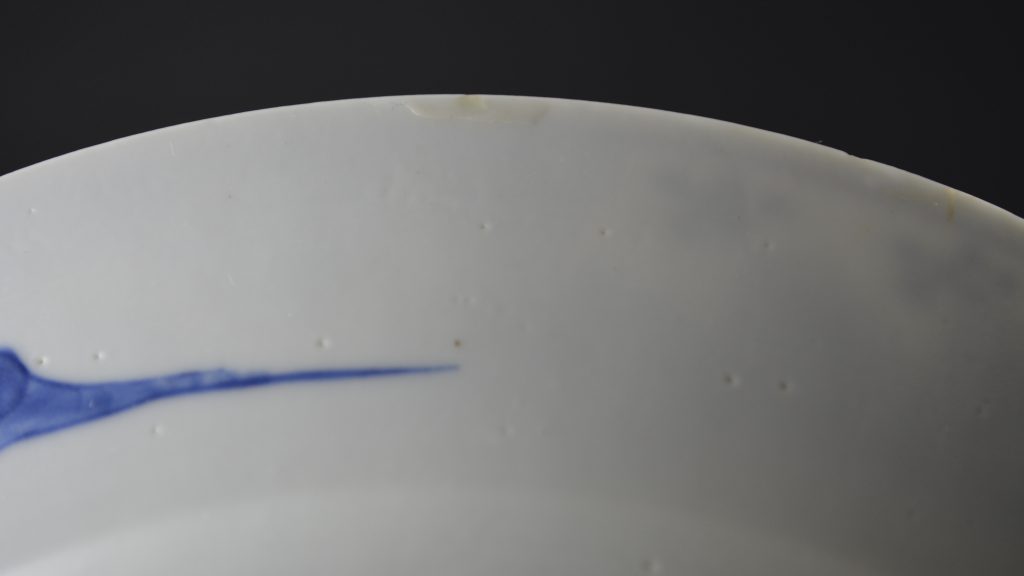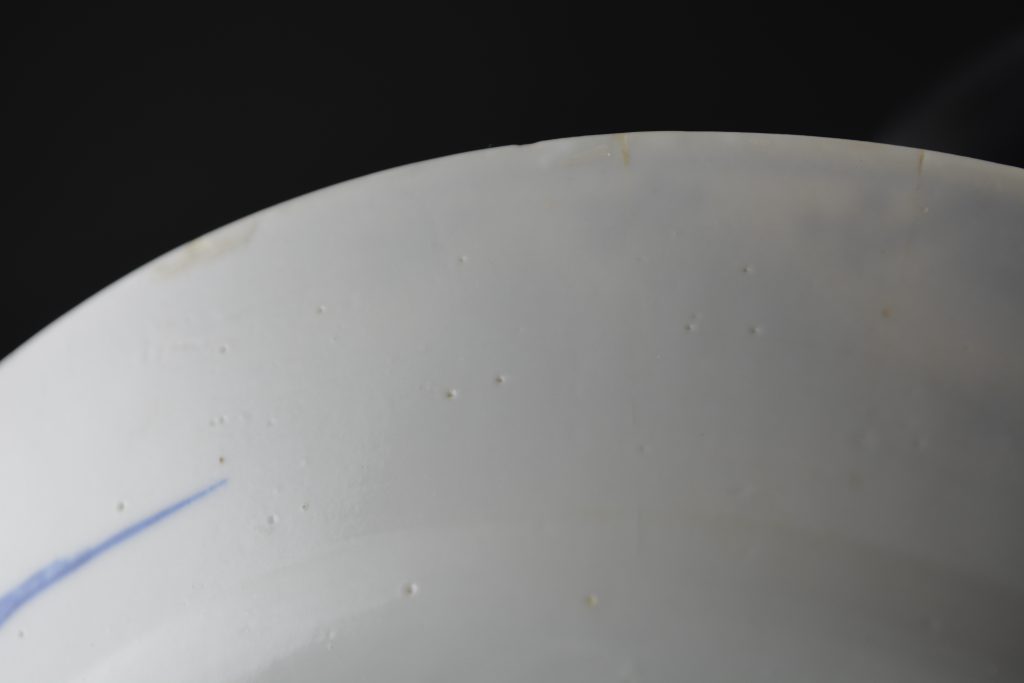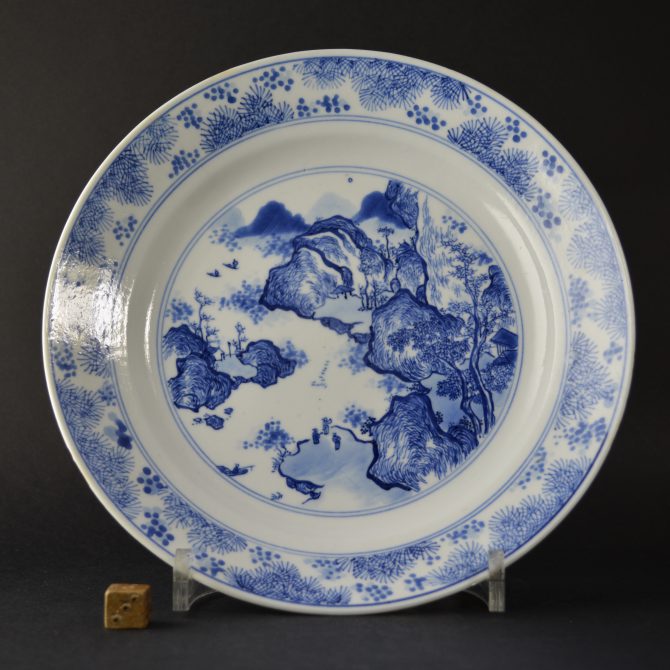
A Kangxi Porcelain Plate c.1690 – 1700 in the ‘Master of the Rocks’ Style.
A Fine Kangxi Porcelain Plate decorated in the `Master of the Rocks` Style, c.1690-1700. Very well painted winters scene is of an extensive rocky landscape on the waters edge with a small boat in the foreground. The right side banked up with rocky mountainous outcrops, trees and small buildings. In the lower center three scholars contemplate the landscape. The Border is of Pine. The back of this Kangxi porcelain plate is decorated with two further landscapes, the center has an apocryphal Chenghua mark (Ming Emperor Chenghua who reigned from 1465 to 1487) within concentric circles.
SOLD
- Condition
- In poor condition, there are three long rim cracks that have been sealed maximum c.45 mm. There are a few very tiny filled chips.
- Size
- Diameter : 20 cm (8 inches)
- Provenance
- Robert McPherson Antiques. The John Drew Collection of Chinese and Japanese Ceramics.
- Stock number
- 25142
Information
The Master of the Rocks Style :
The phrase Master of the Rocks is unfamiliar to many Chinese, it is another invented category used by western scholars and collectors to pigeon-hole groups of Chinese ceramics, rather like Kraakware or Celadon. However unlike either of these Master of the Rocks first coined by Gerald Reitlinger, is a clear, distinct group. This style lasted from about 1645 to 1690. The highly distinctive painting style consists of landscapes with massive powerful mountains in a linier technique. The style is, for want of a better word, ‘painterly’ and often includes distant mountains painted with a very wet brush that contrast with the linier mountains in the mid ground. The style usually employs a technique of blobby dots, either in the landscape or as a border. These dots are painted with a wet brush and have no outline. These designs were certainly inspired by late Ming scroll painters like Wang Jinazhng (active c.1628 – 1644). The same use of brush strokes in contour like parallels lines can be seen. Mountains with jagged peaks are piled up creating a dramatic structure. But where as many of the scroll painters are known, the ceramics artists are anonymous.
Later Master of the Rocks Style :
Master of the Rocks style porcelain is normally dated to the late Transitional or Early Kangxi Period in the reference books. We have followed this dating with all `Master of the Rocks` porcelain. But I now think plates of this type were made slightly later, after the re-opening of the kilns at Jingdezhen. When one compares the thin potting, rich watery blues and the milky white glaze of these plates to other `Master of the Rocks` pieces they appear quite different. The shape of the plate, thin potting, tones of blue and sheen of glaze relate to Kangxi Porcelain of the 1690`s not the earlier more robust, thickly potted `Master of the Rocks` pieces of the late Transitional or early Kangxi Period. The drawing of the Chenghua mark on the back is also very similar to Kangxi Porcelain of the 1690`s, for example the well know Rotterdam Riot plates of c.1692-1695 whose Chenghua Marks could even be by the same hand.
Apocryphal Marks on Kangxi Porcelain :
Apocryphal marks are frequently encountered on Chinese porcelain particularly on Kangxi Blue and White Porcelain, the mark of the Ming Emperor Chenghua who reigned from 1465 to 1487 being by far the most common, other Ming marks include Jiajing (1522-1566) and less frequently Wanli (1573-1620). These marks were not added to the piece to deceive, but more as a sign of reverence to earlier potters of the Ming dynasty (1368-1644). Occasionally they are used on pieces copying Ming Porcelain, these objects were probably made for collectors who could not afford the Ming original. Tianqi is an early period for such an apocryphal mark.
The John Drew Collection of Chinese and Japanese Ceramics :
John Drew was born in 1933 in Tideswell, Derbyshire, where his father was curate. The family moved to Norfolk whilst he was still a baby and his father became the rector of the parish of Intwood and Keswick. He was educated at Sedbergh School and after National Service in the R.A.F. being taught Russian, he went to Queens College, Oxford to read Greats (Classics). He spent nearly all his working life in various African countries as an archivist, moving to a post at Cape Town University in 1978. He remained in Cape Town after his retirement until his death in 2006. He had a great love of the English countryside (but not the climate) and this is shown in many of the pieces he collected. His taste was varied and ranged from Neolithic right through to the 18th Century. When we sent photograph to his home in Cape Town of pieces we thought he might be interested in, he would write long funny well observed letters back, wanting to add many of the items to his growing collection. Over the years we got to know him better and better, and during the last few years it was very rare for him to not want all the pieces we offered him. We knew his taste, even though his taste was so varied. This was in no small part because he had a very good eye and it was a pleasure finding things that interested him, because they were also very interesting to us. He never got to put his collection on display, something he hoped to do while on retirement in England, so it is with a mixture of pleasure and sadness that we offer these pieces from his collection. Each piece has a John Drew collection label, so when the collection is split up there will be some lasting record of the love and hard work he put into his two decades of collecting.
